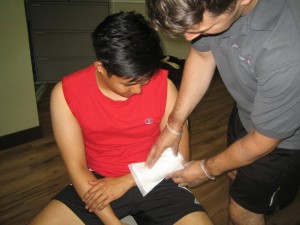Rats and other rodents can deliver a nasty bite that can lead to a serious infection. Always remember that care should be taken in order to contain the rodent after a bite in order to determine if the animal has an infection.
How to care for rat bites

- Always stay safe when dealing with a rat, especially a wild one. Generally, they are more afraid of you. In case the rat is a pet and the owner is around, ask him/her to secure the rat. Remember that rats can scratch or bite when handled or frightened, thus it is best to leave them alone.
- When helping an individual with a rat bite, you have to observe the universal precautions and wear personal protective gear if available.
- If bleeding is present, you have to apply direct pressure using a clean cloth or gauze. Do not use a tourniquet unless there is severe bleeding that could not be controlled in any way.
- Once the bleeding is controlled, you have to cleanse the wound using warm water and soap. Clean inside the wound and make sure to rinse away any leftover soap or it might cause irritation later.
- With a dry, clean dressing, cover the wound. You can apply an antibiotic ointment over the wound before covering. Take note that rat bites can often lead to infection. In case the injury is on a finger, remove any ring before it starts to swell. Observe for the signs of infection such as swelling, redness, warmth and oozing pus.
- A doctor should be consulted if the wound require stitches. Since rat bites are often deep, the risk for infection is usually high.
- Wounds on the hands or face must be carefully assessed by a doctor due to the high risk for scarring and loss of function.
Risk for infection
It is important to note that rat bites might be contaminated with Streptobacillus moniliformis. These infections can lead to rat bite fever. The signs and symptoms of rat bite fever can manifest 10 days after the bite and likely to occur after the wound itself is already healed. The symptoms to watch out for include headache, fever, vomiting and pain in the joints and back. Two to four days after the start of fever, a rash can manifest on the feet and hands and one or several large joints become red, swollen and painful. Once any of these symptoms are present, a doctor should be consulted right away.
Tips to bear in mind
Always remember that infection is a main issue with any animal bite, especially from rats. You have to keep the area as clean as possible throughout the healing.
It is important to note that there is a misconception that rats are a main source of the rabies infection. In reality, bats are known to carry rabies often than any other animal. In addition, raccoons are more likely to carry the disease followed by bats, skunks and foxes. The transmission of rabies from rodents to humans is considered rare.
